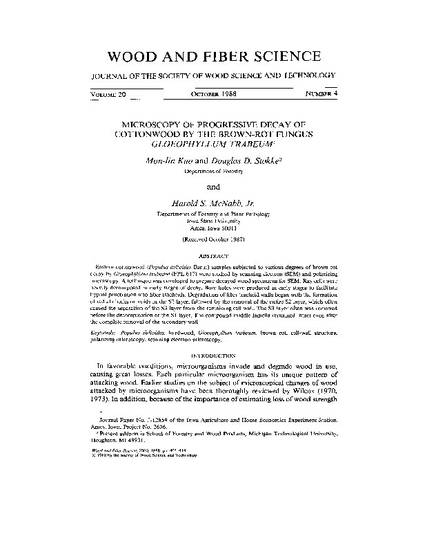
Eastern cottonwood (Populus deltoides Bartr.) samples subjected to various degrees of brown-rot decay by Gloeophyllum trabeum (FPL 617) were studied by scanning electron (SEM) and polarizing microscopy. A technique was developed to prepare decayed wood specimens for SEM. Ray cells were heavily decomposed in early stages of decay. Bore holes were produced in early stages to facilitate hyphal penetration into fiber tracheids. Degradation of fiber tracheid walls began with the formation of radial checks or voids in the S2 layer, followed by the removal of the entire S2 layer, which often caused the separation of the S3 layer from the remaining cell wall. The S3 layer often was removed before the decomposition of the S1 layer. The compound middle lamella remained intact even after the complete removal of the secondary wall.
Available at: http://works.bepress.com/douglas_stokke/19/

This article is published as Kuo, Mon-lin, Douglas D. Stokke, and Harold S. McNabb Jr. "Microscopy of progressive decay of cottonwood by the brown-rot fungus Gloeophyllum trabeum." Wood and fiber science 20, no. 4 (2007): 405-414. Posted with permission.